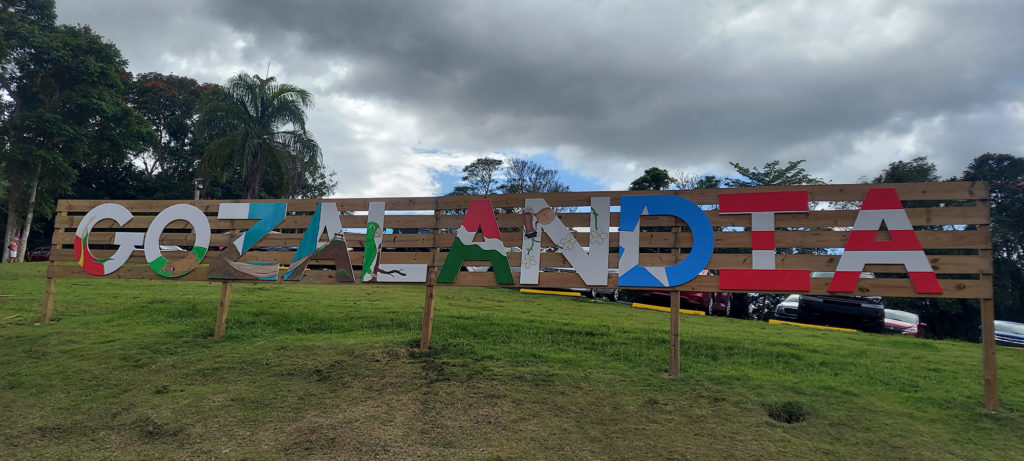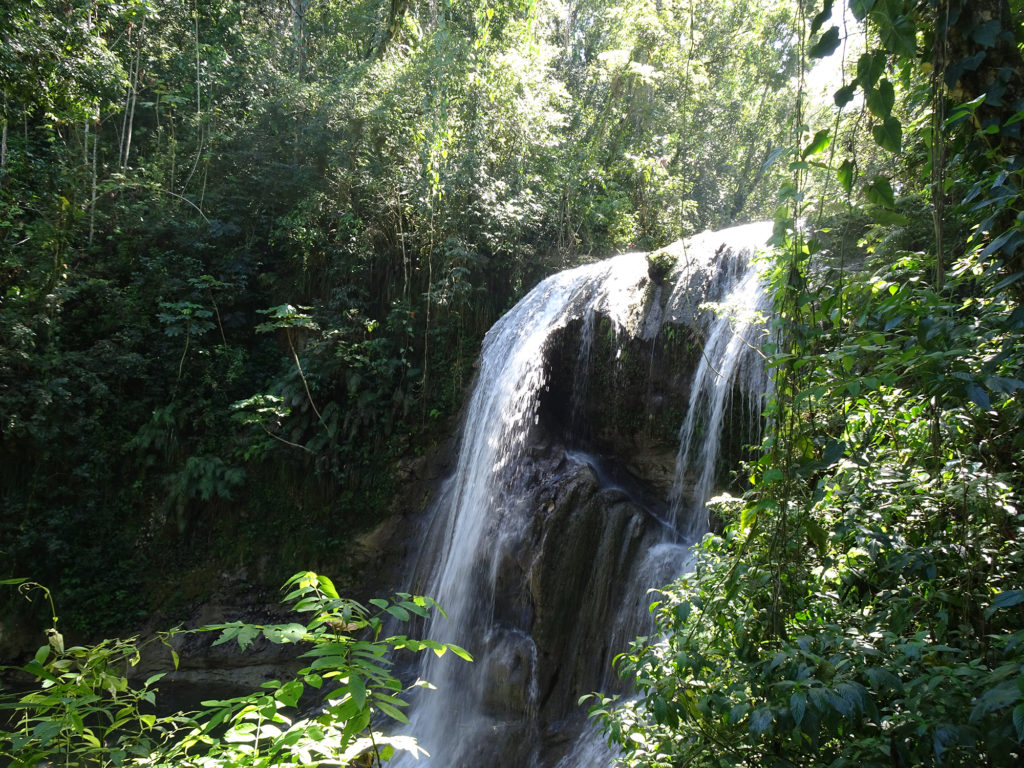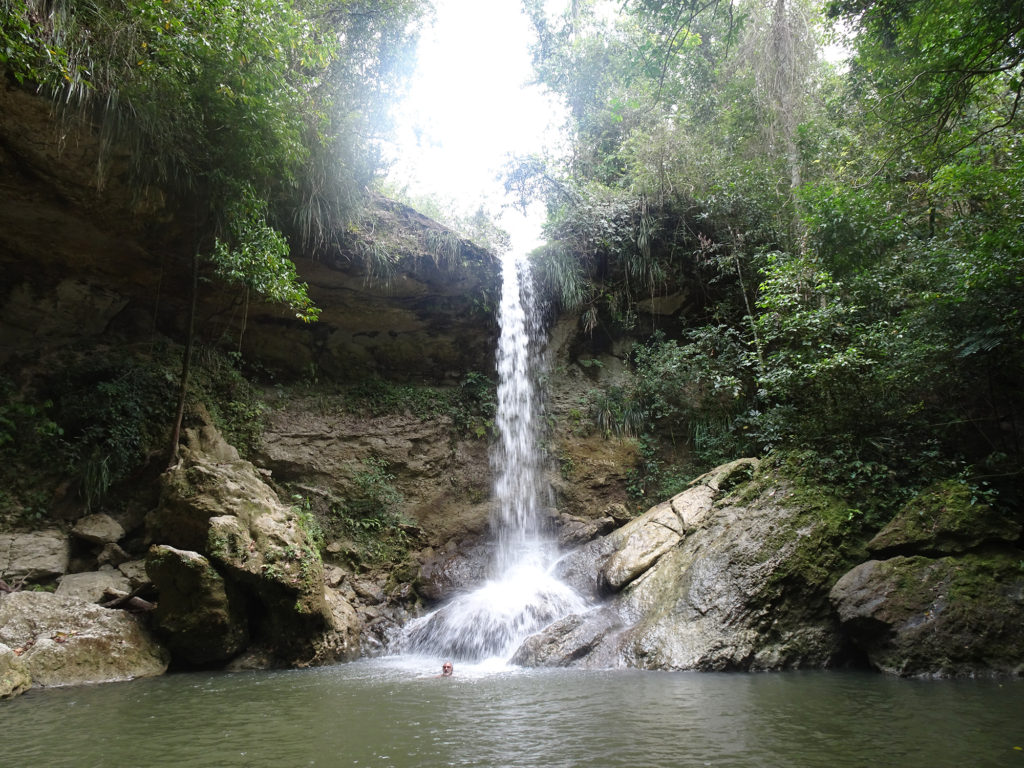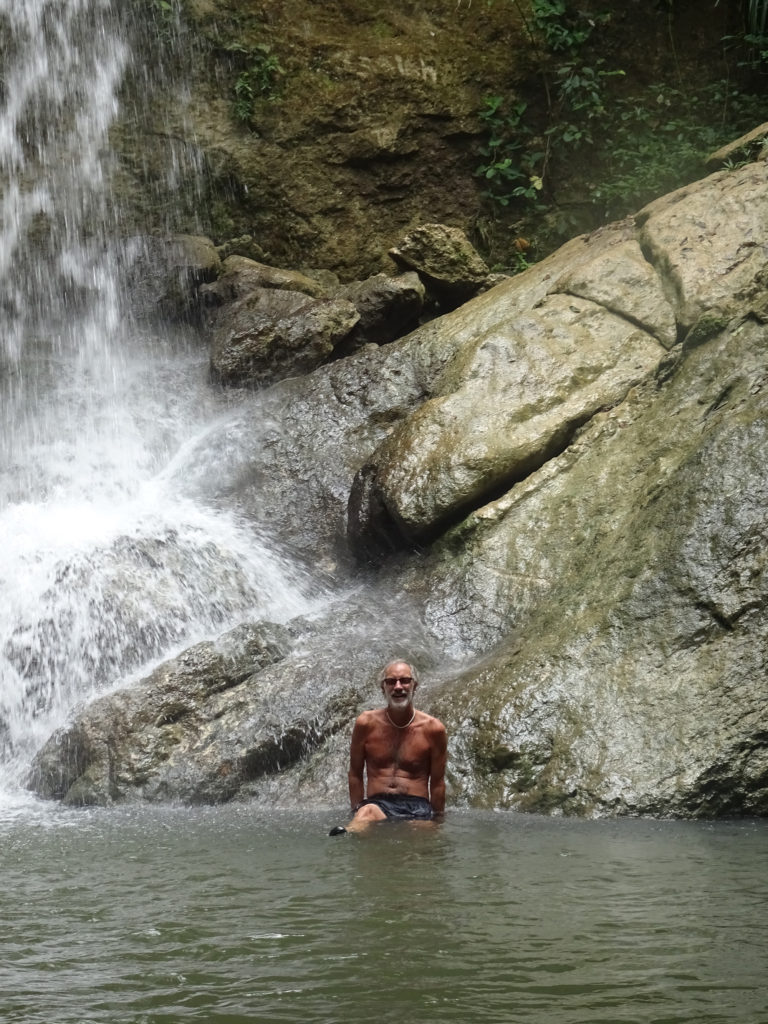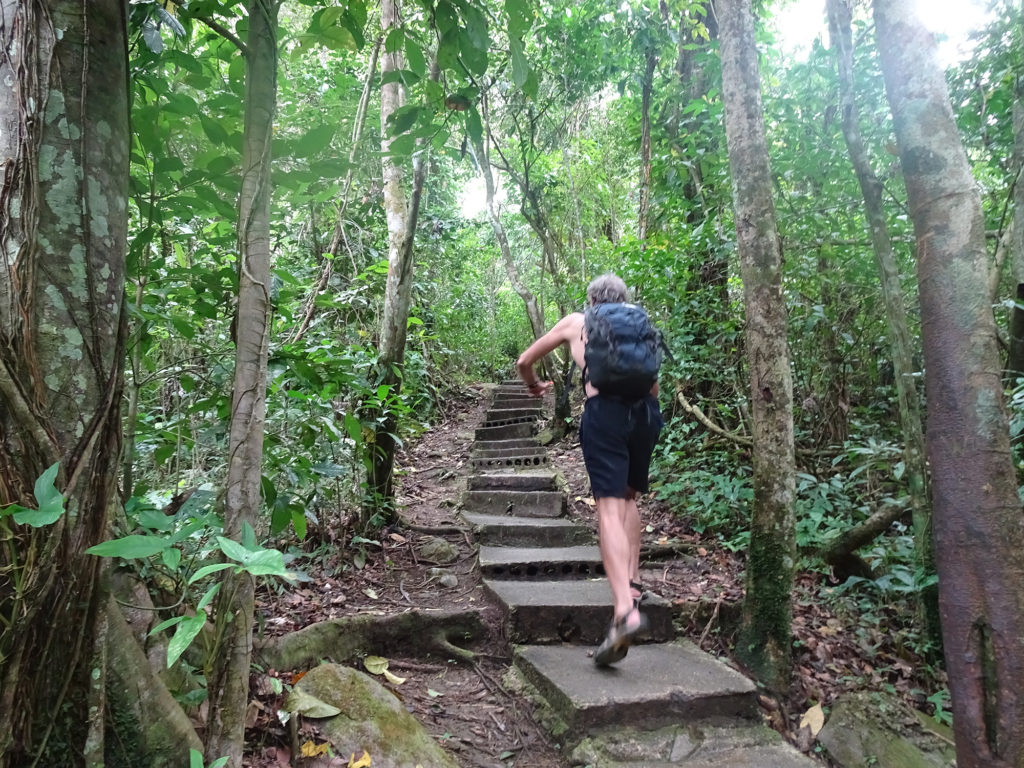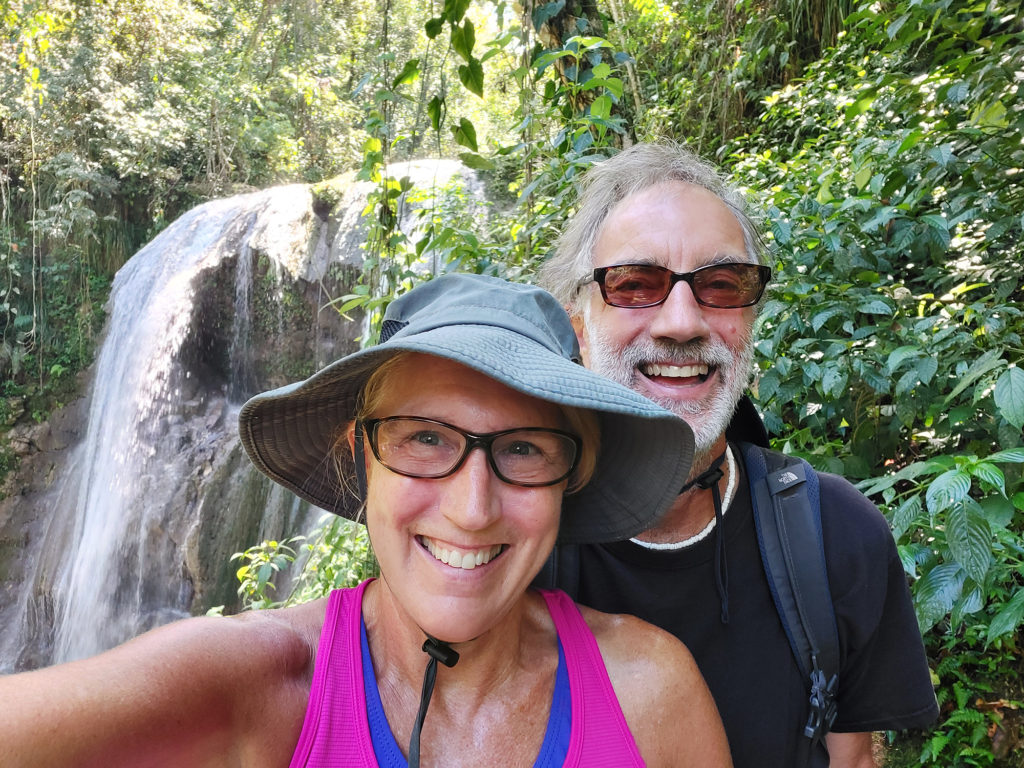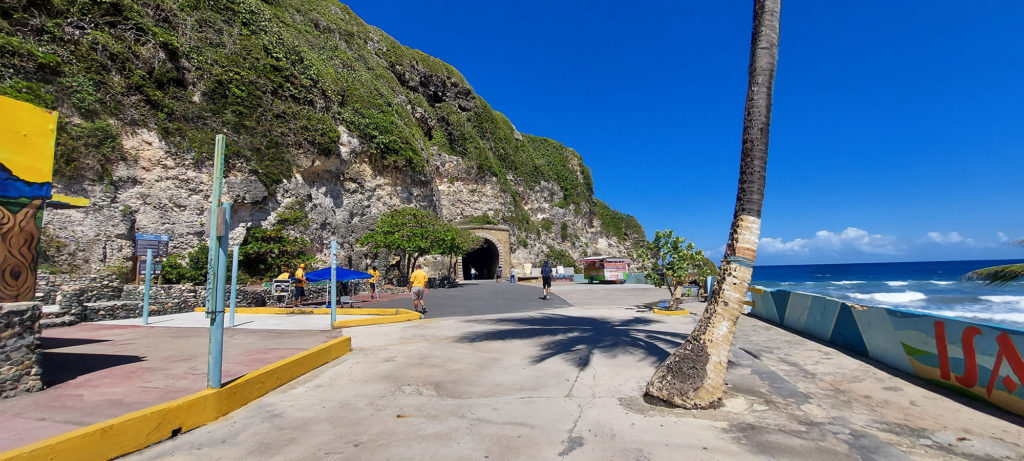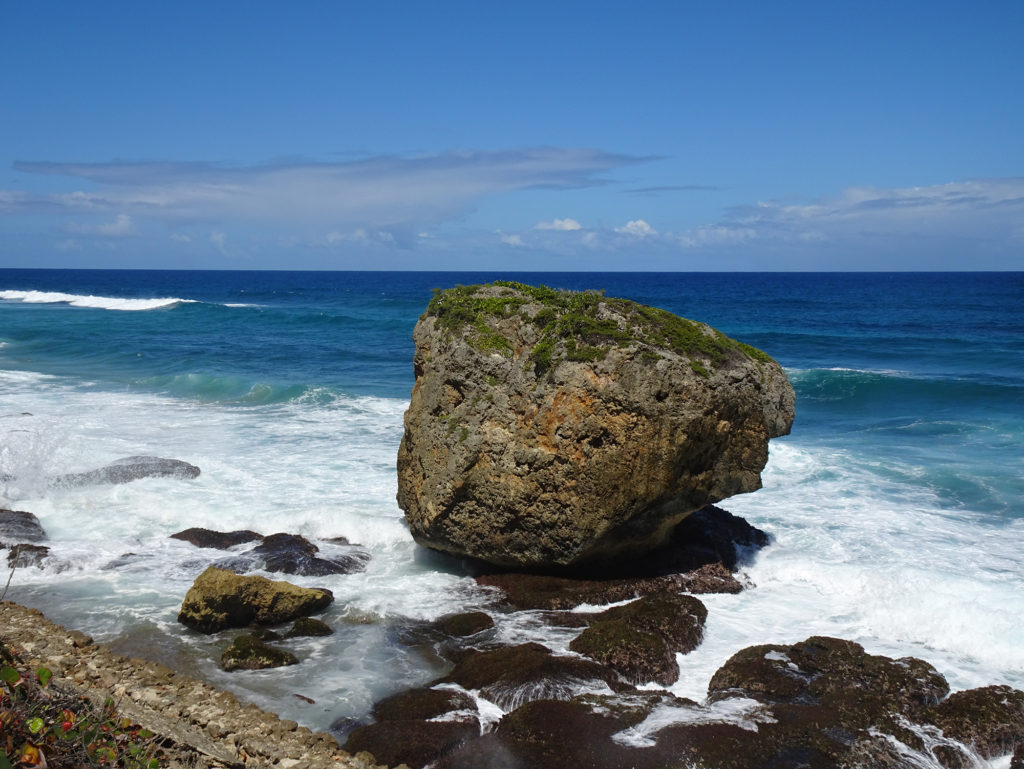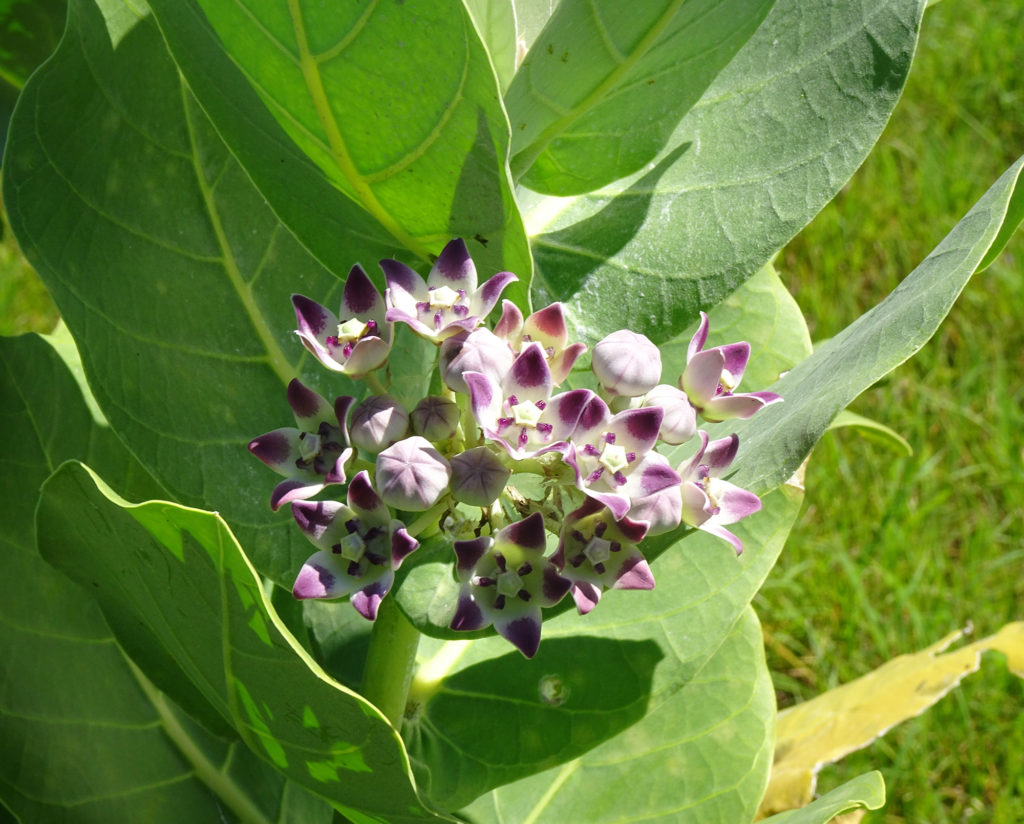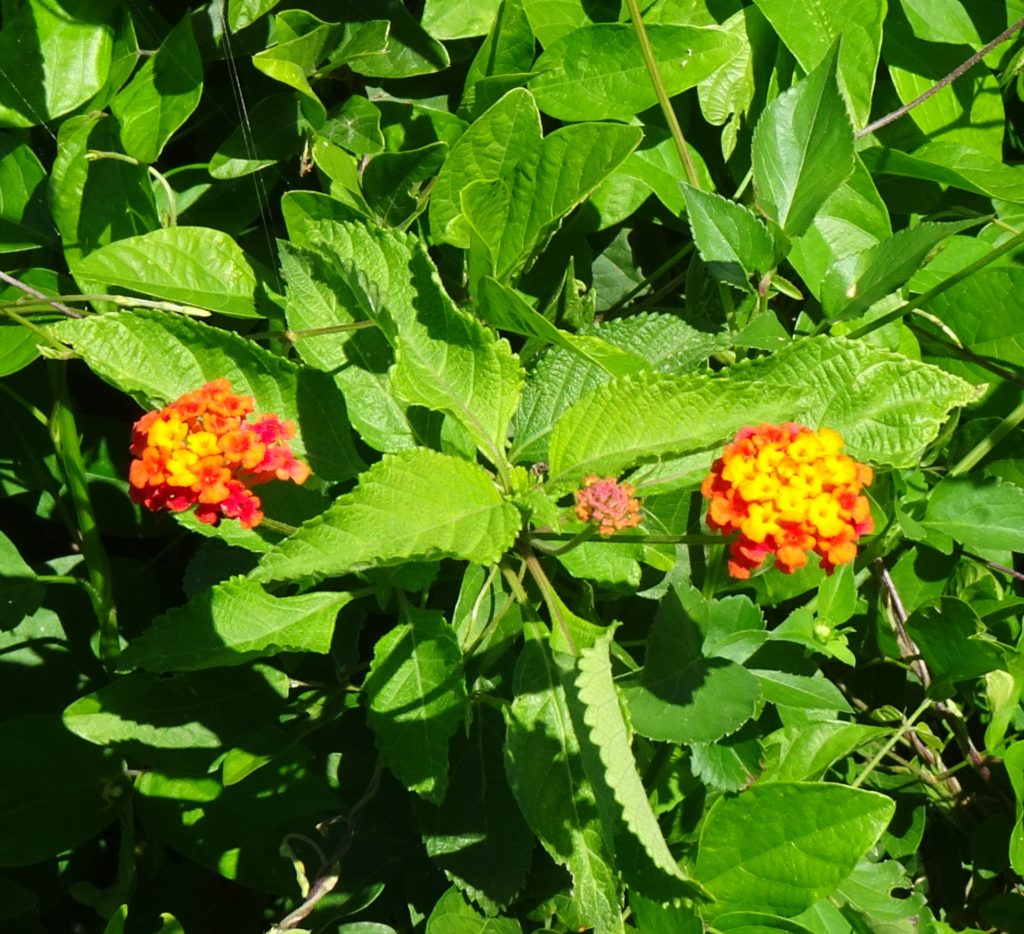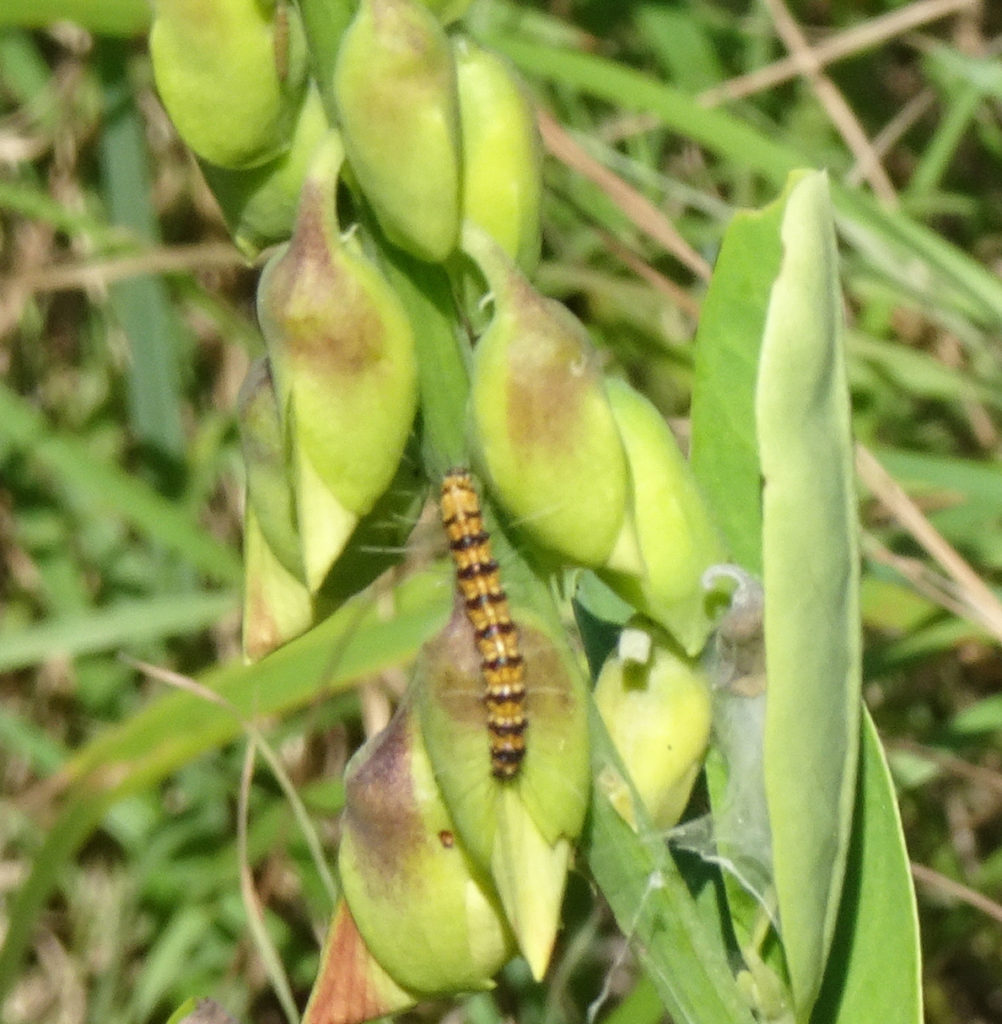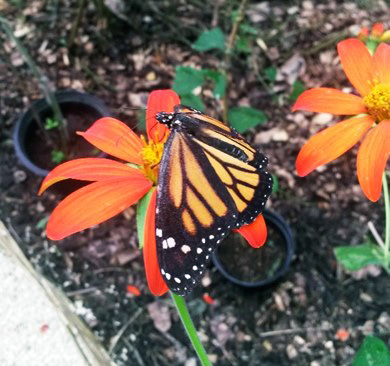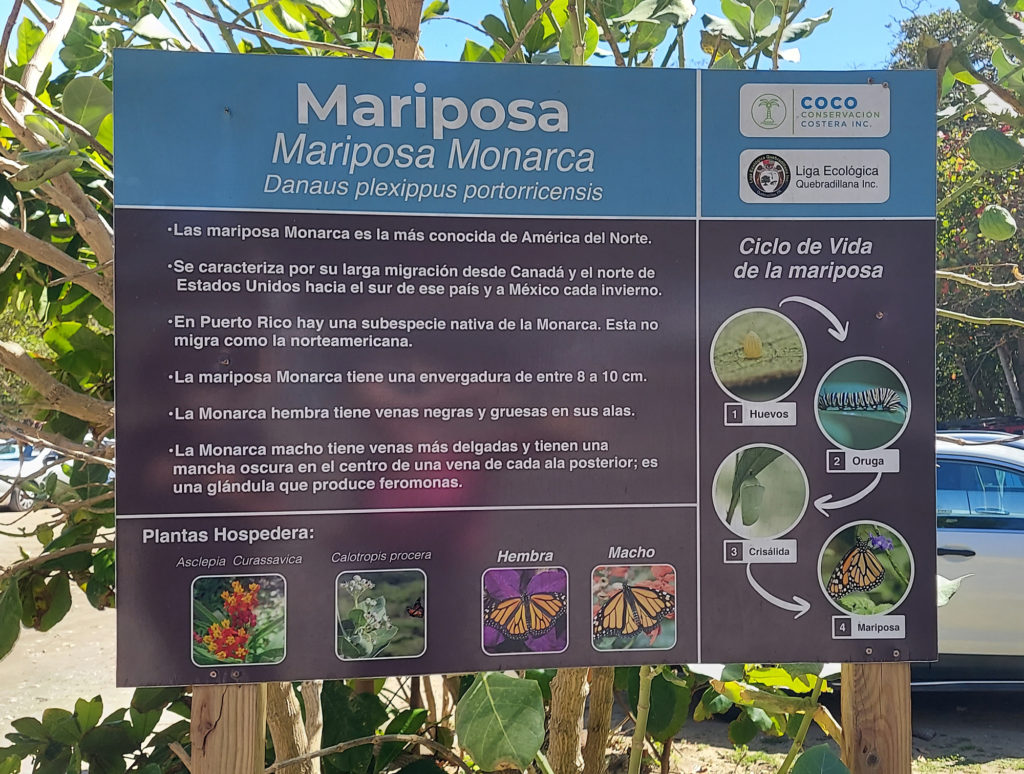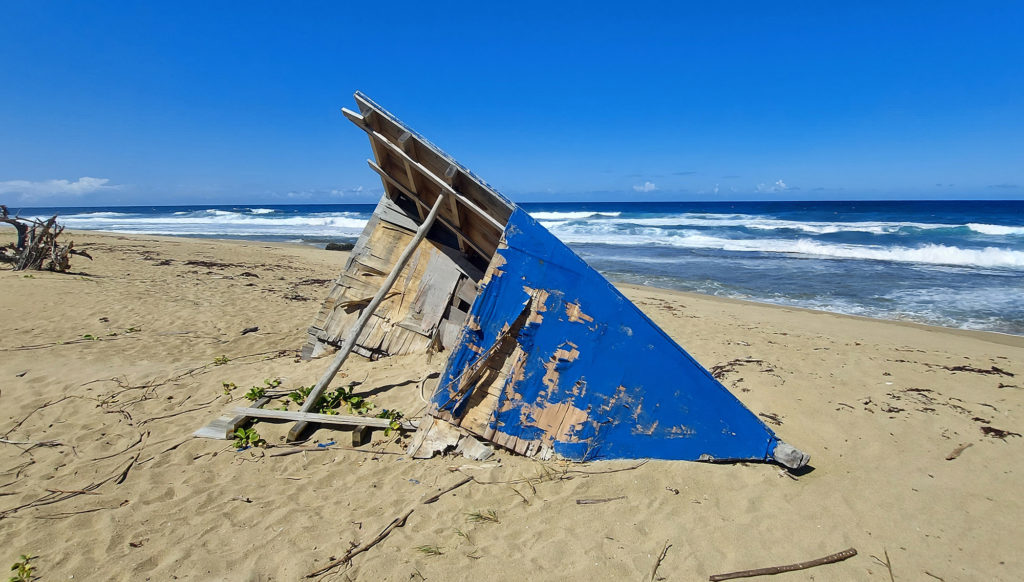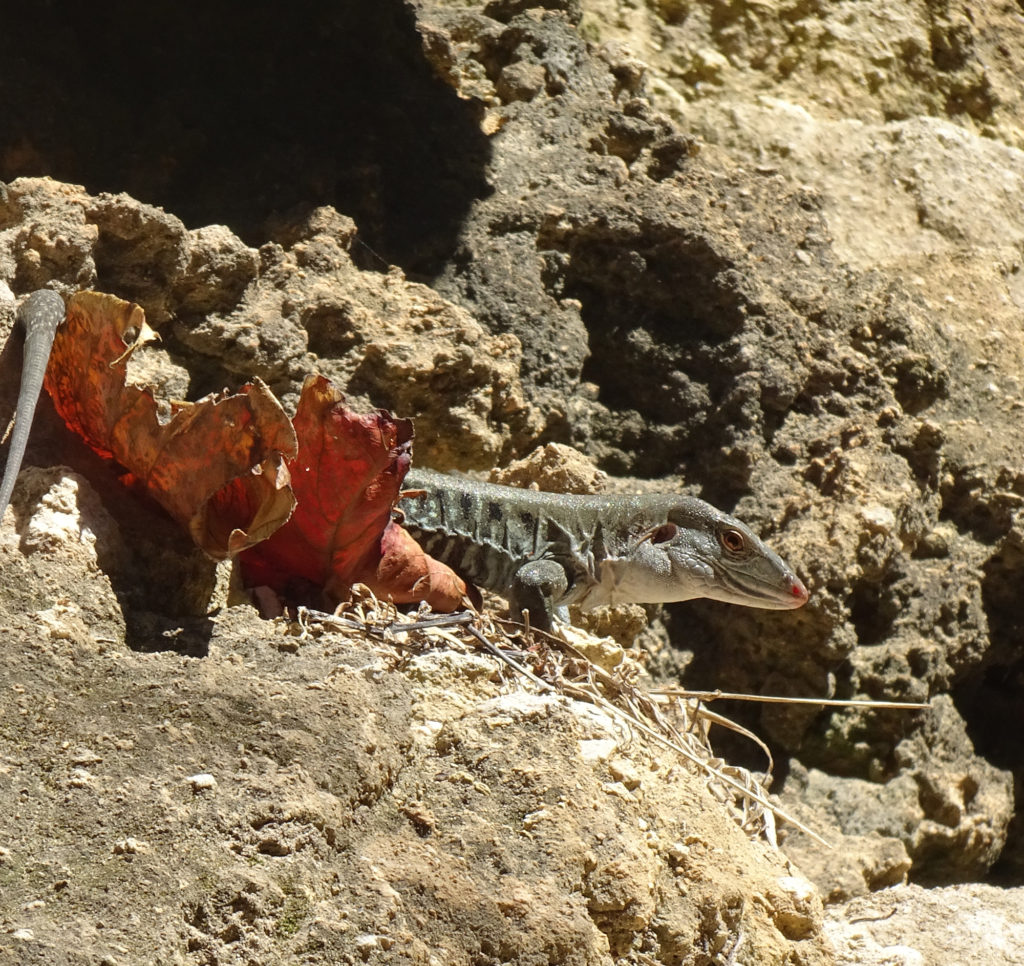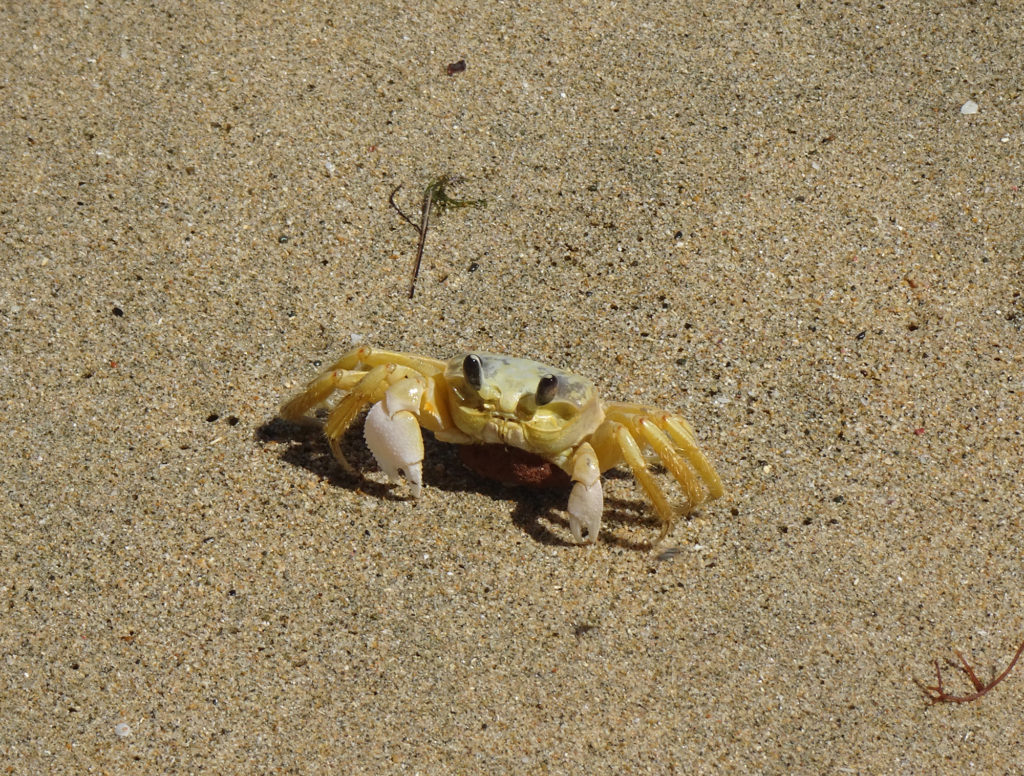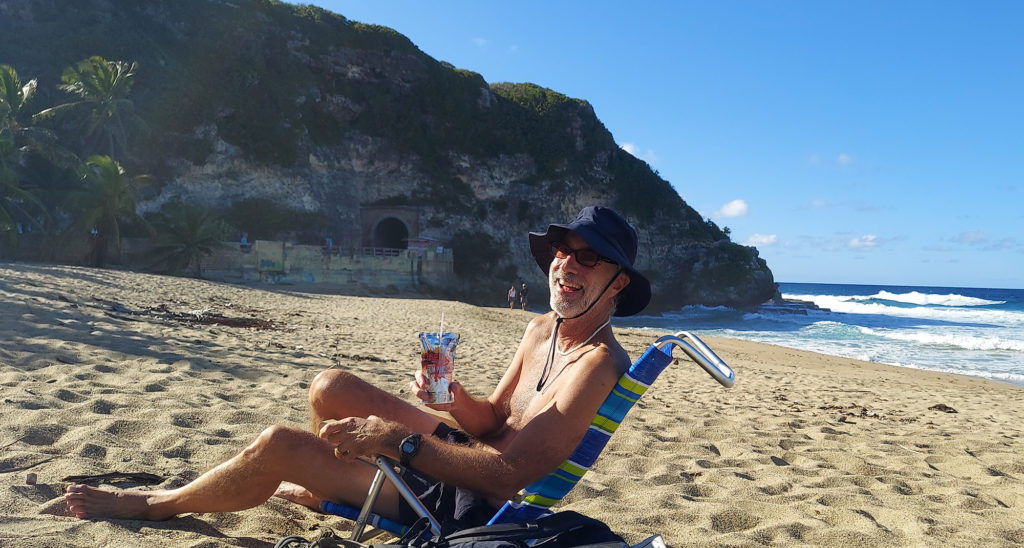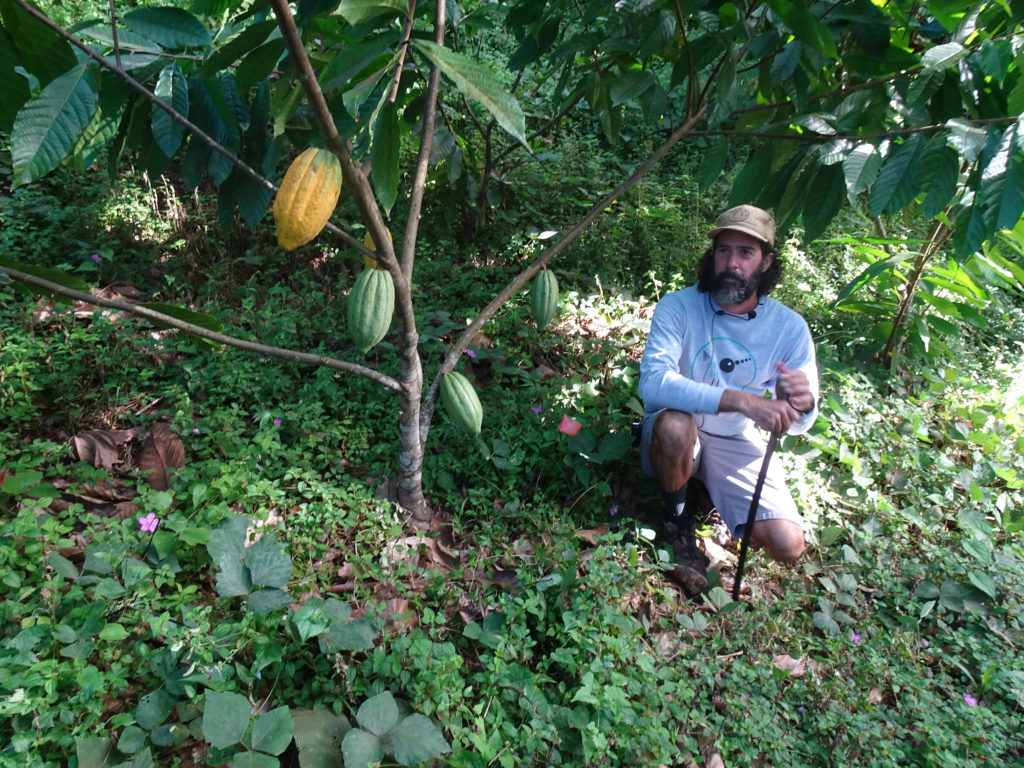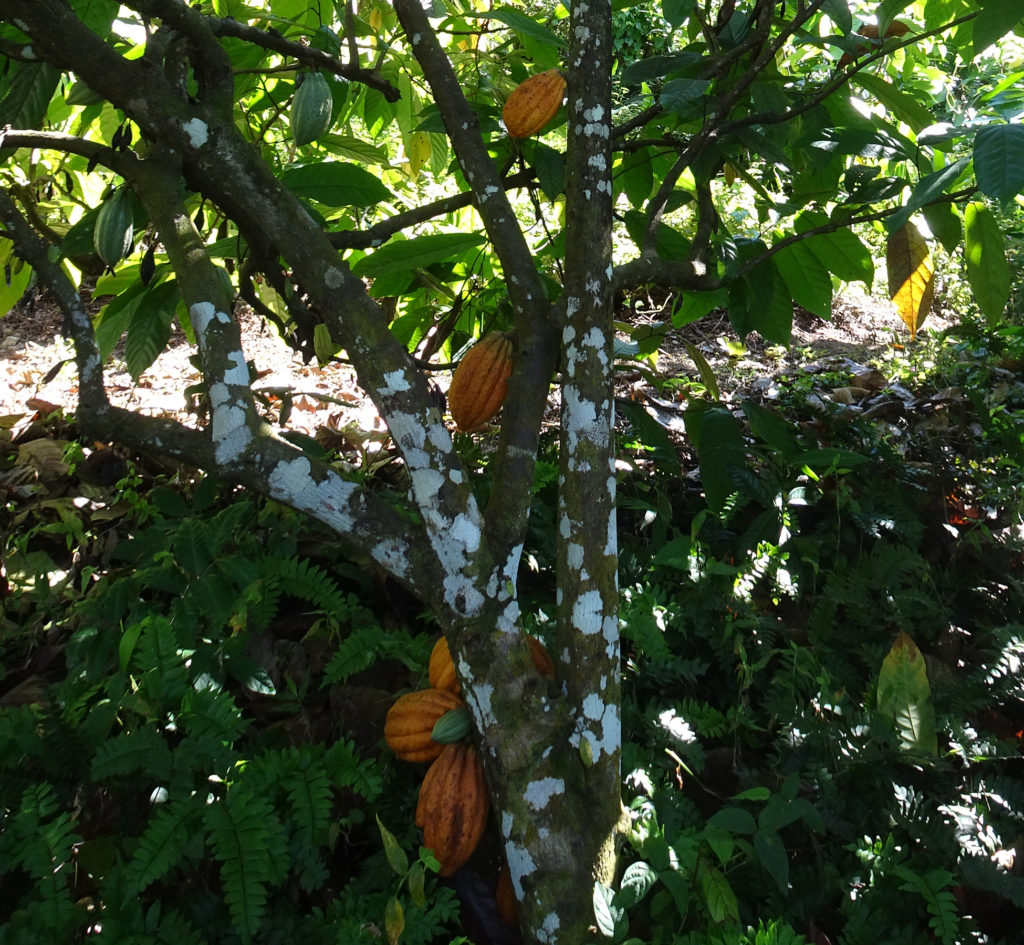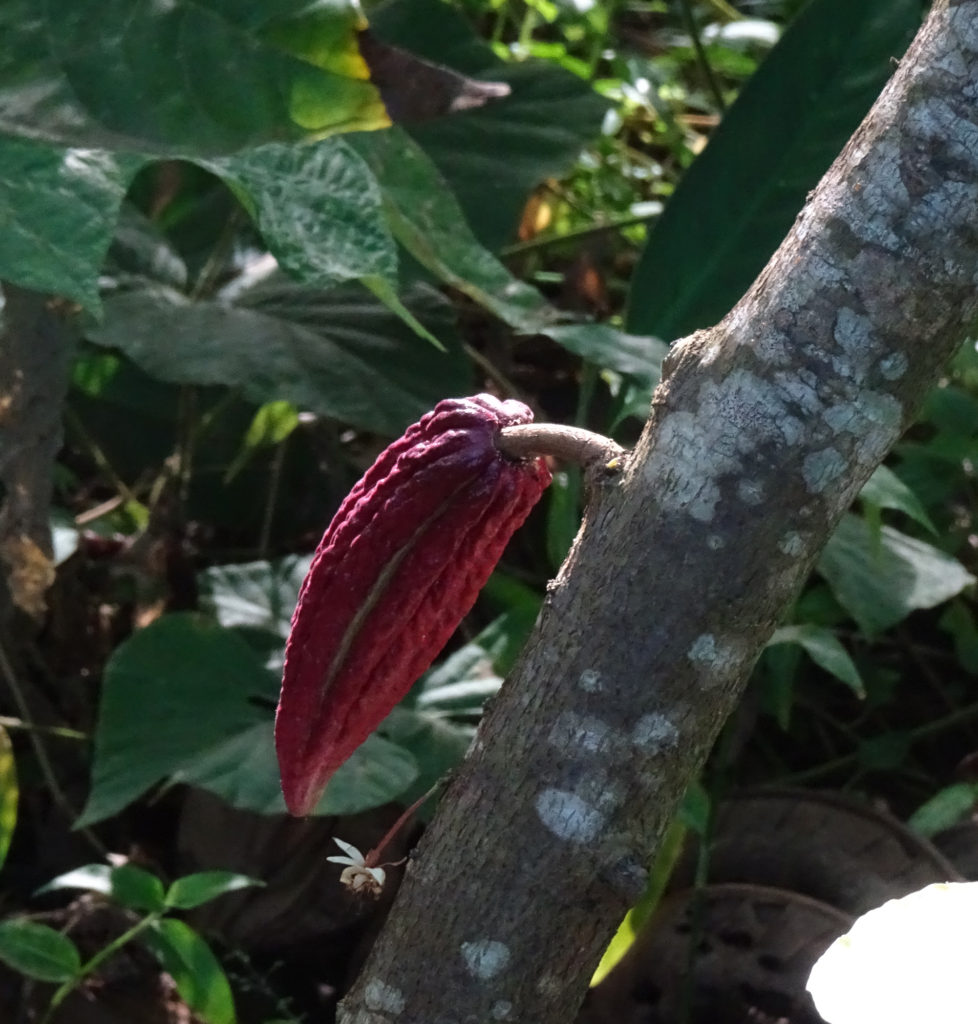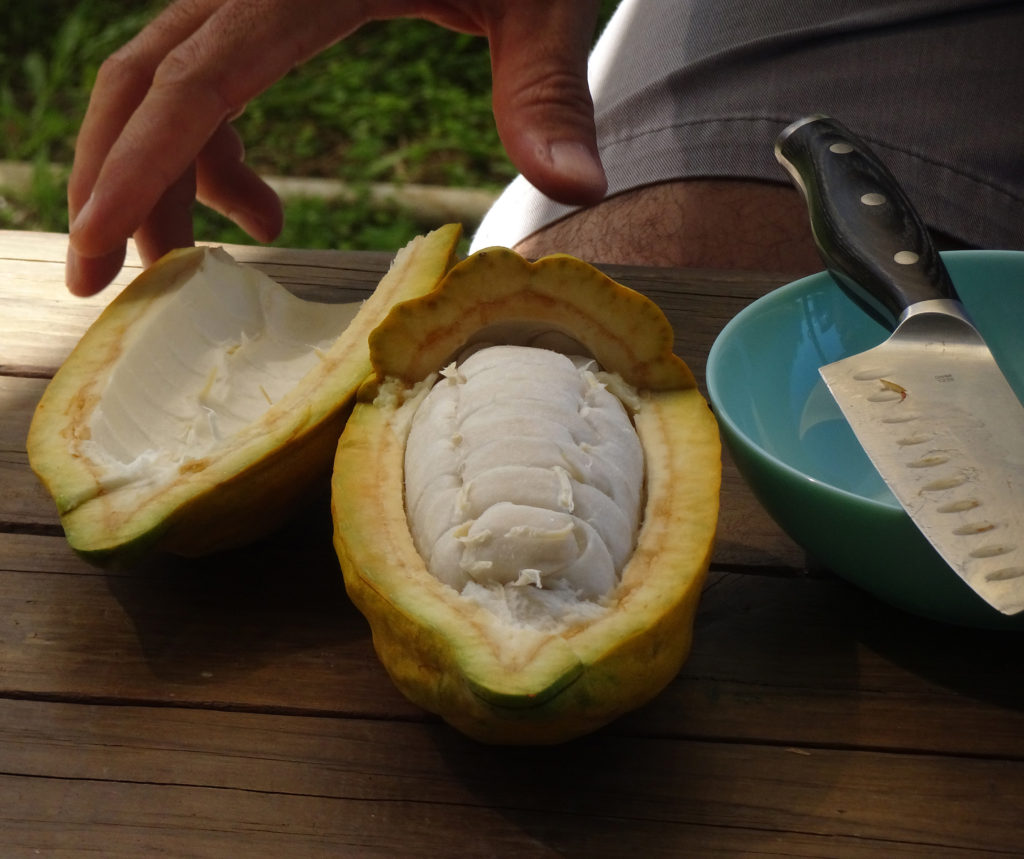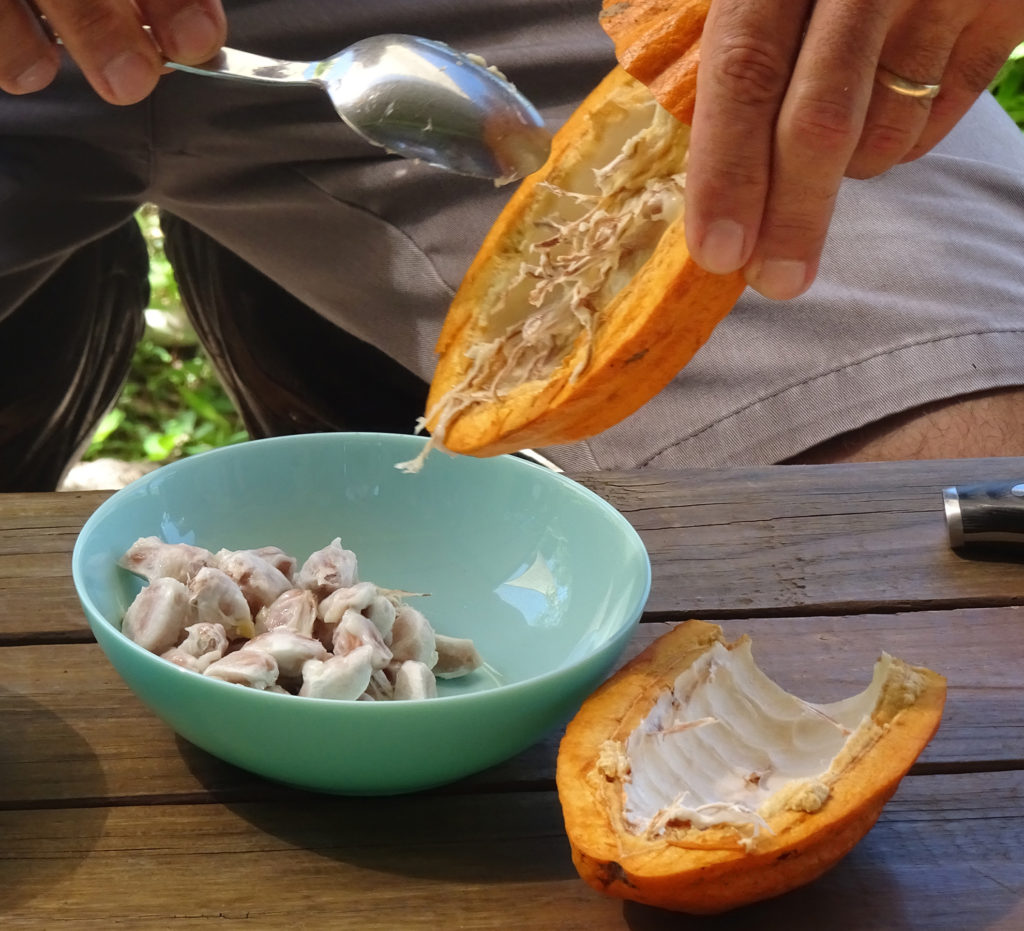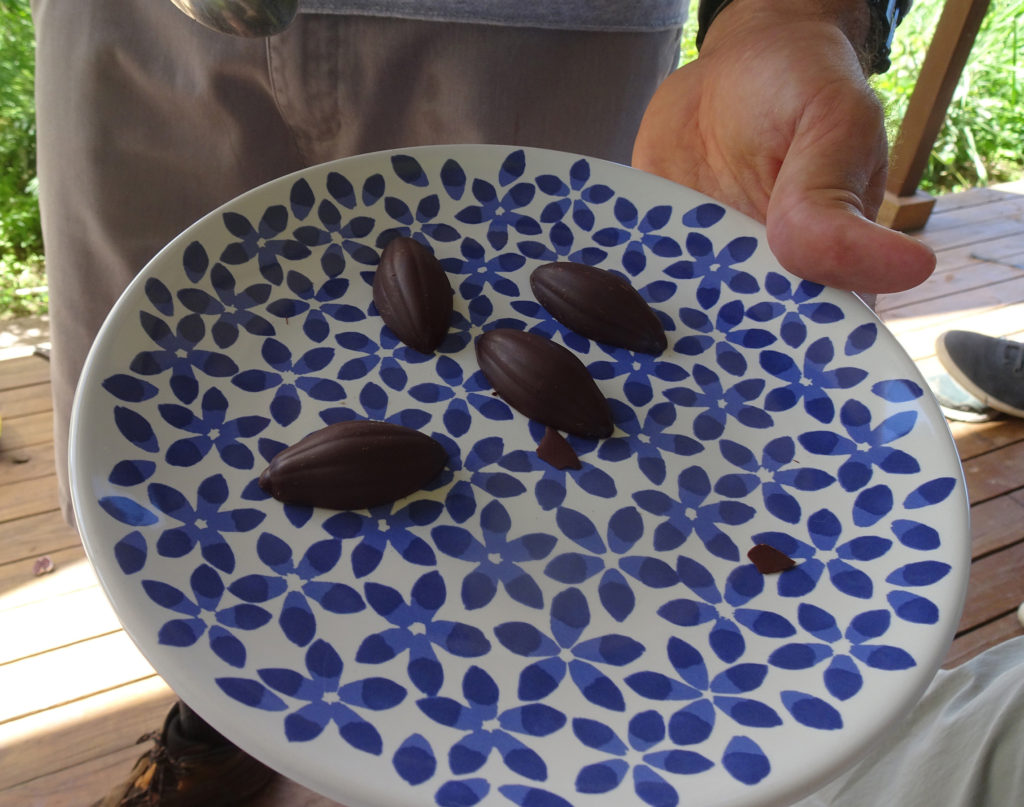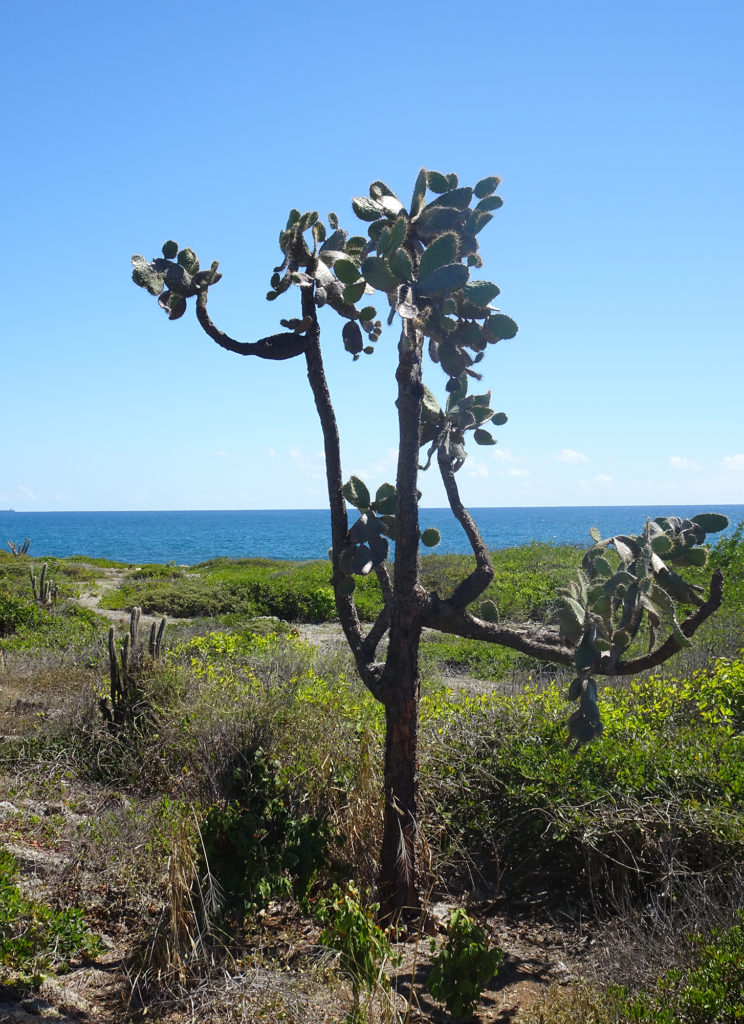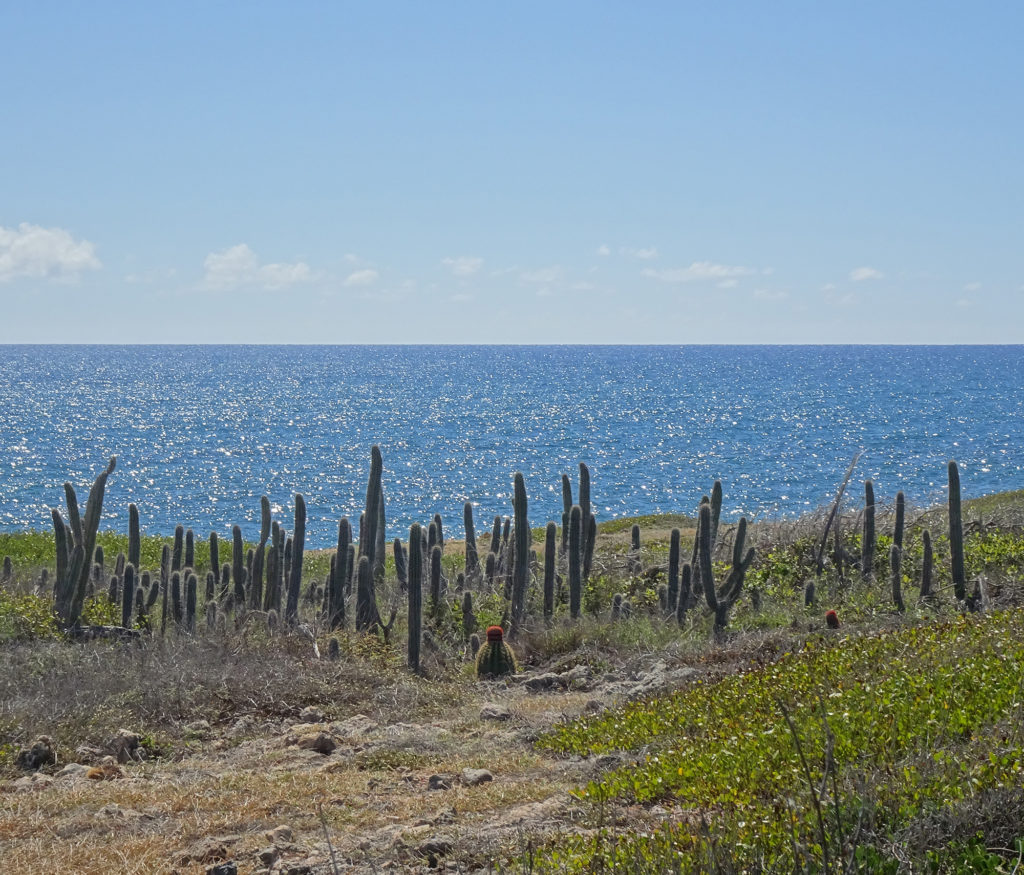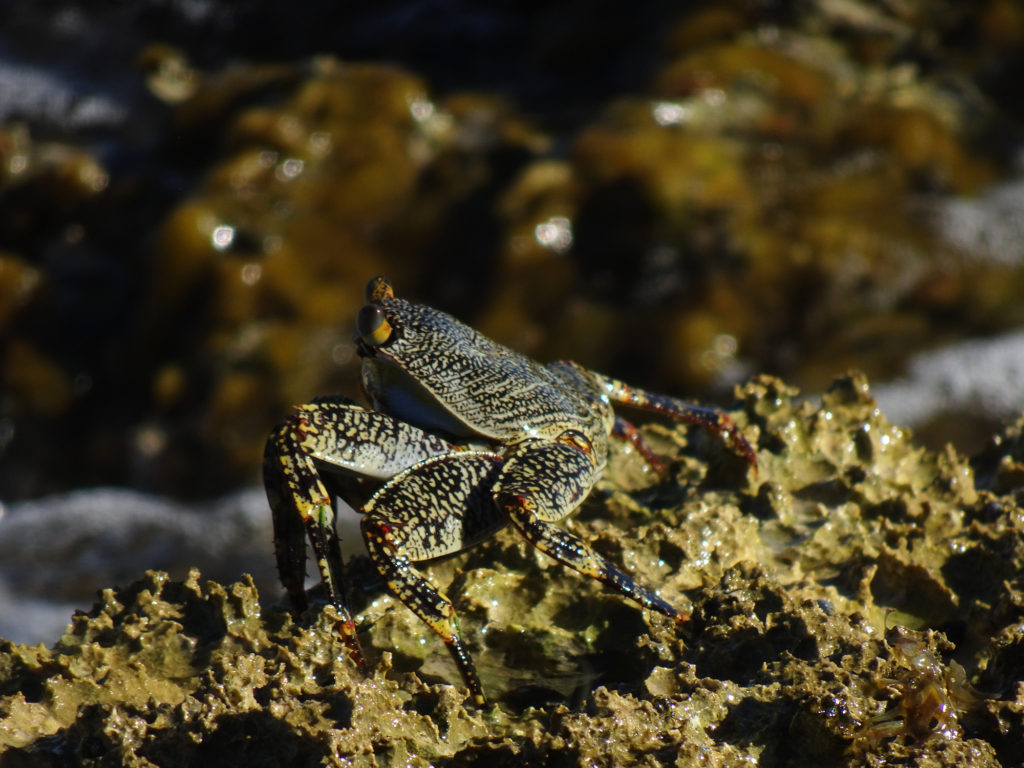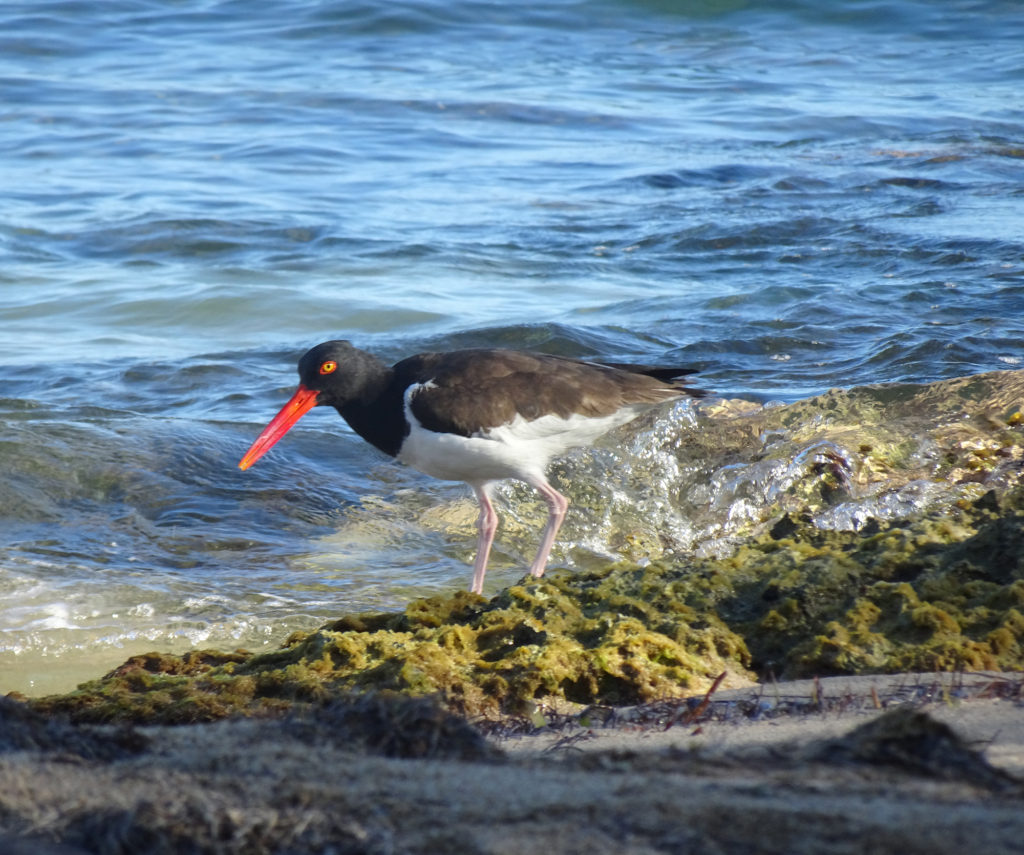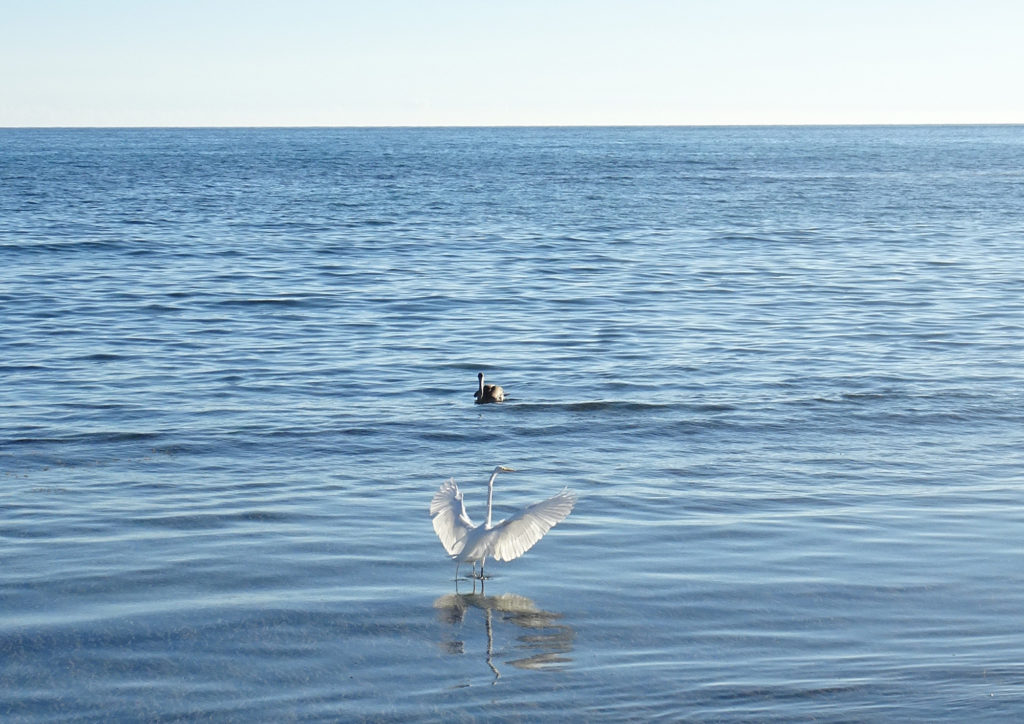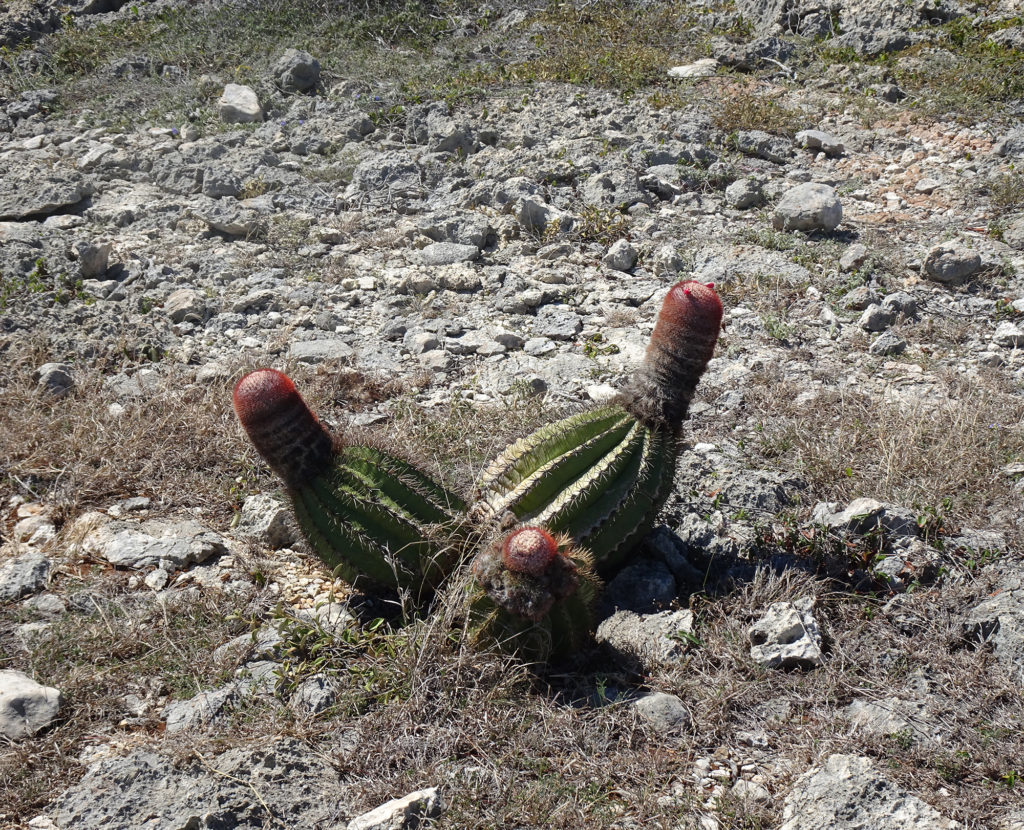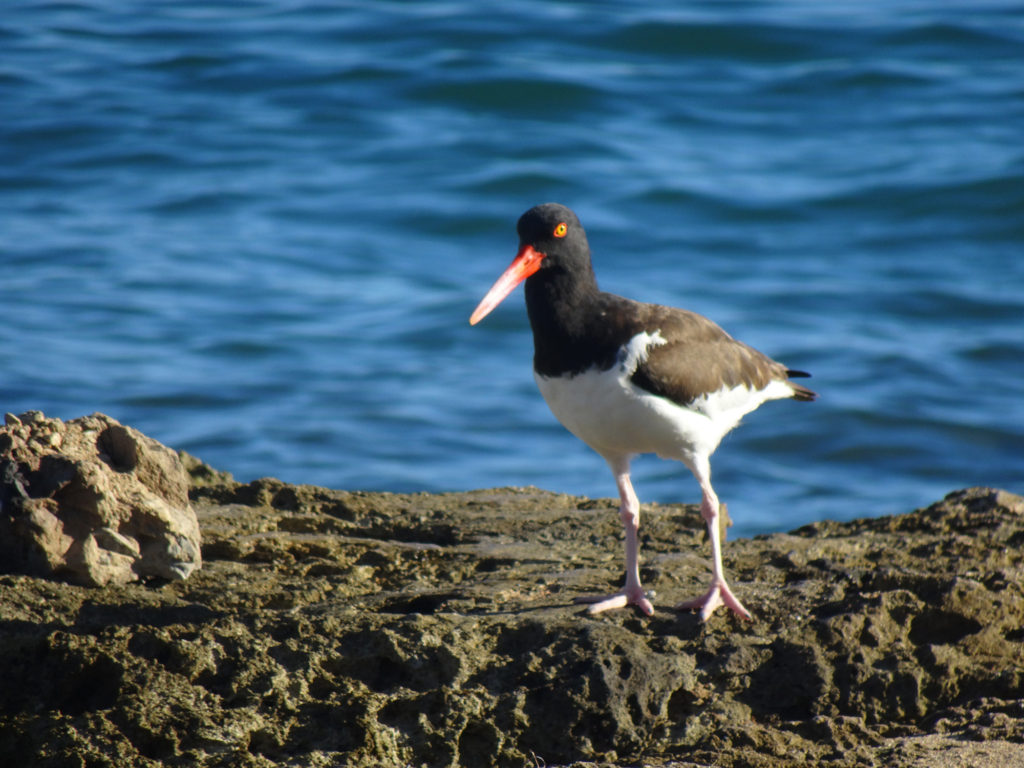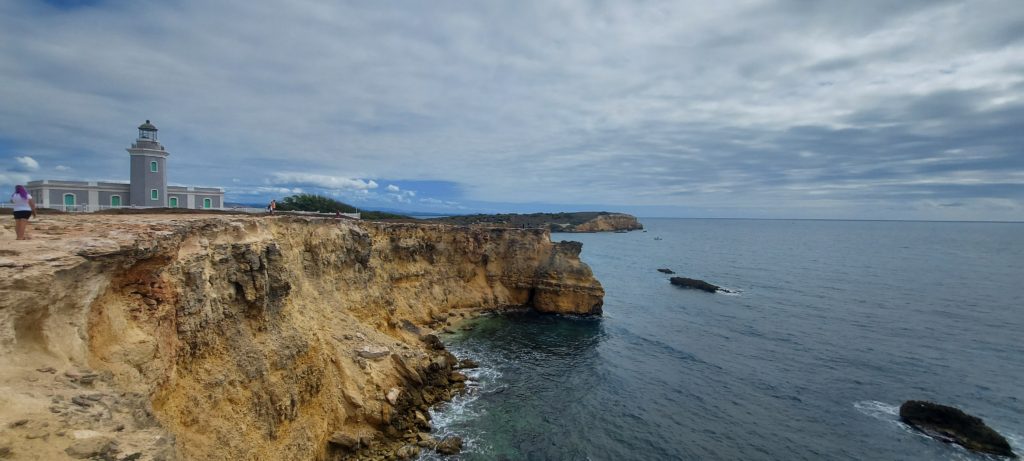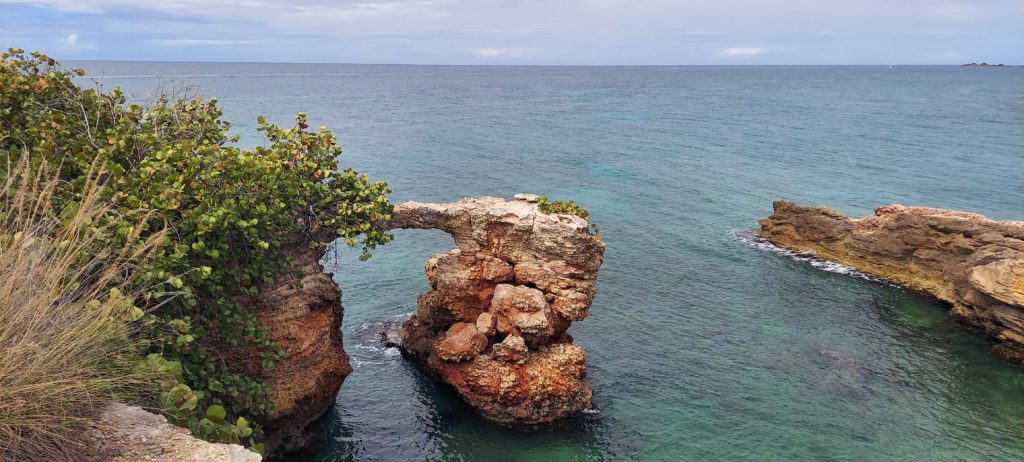(Watch Bob’s YouTube video to take the hike with us.)
One of the items on Bob’s Cabo Rojo bucket list was finding the Túnel de Guaniquilla (Guaniquilla Tunnel). We had both seen tourist accounts on TripAdvisor and other websites about how horrendously difficult it is to find, and mixed reviews on whether the search was worth it. But Bob was determined. (Guanaquila is pronounced Gwah-nuh-KEE-luh.)
“After years of looking for it during our stays outside Boquerón ( only a few miles from the tunnel), we finally found the tunnel. Not worth the mosquitoes, mud and prickers to find it.”
“Finally found it. Don’t bother.”
“I had to climb a post fence that seemed to be on private property. Very narrow, overgrown path that eventually opens up a little.”
It turns out that these people were making the mistake of seeking the tunnel as a drive-by tourist attraction on their way to somewhere else. This is how it the entrance looks from the winding road they were searching from:

So imagine our delight when we decided to hike in Punta Guaniquilla Nature Reserve, and when Lisa pulled out her AllTrails app to examine the trails from the southernmost trailhead, she discovered an offshoot on the map that looked like it might lead to the tunnel.
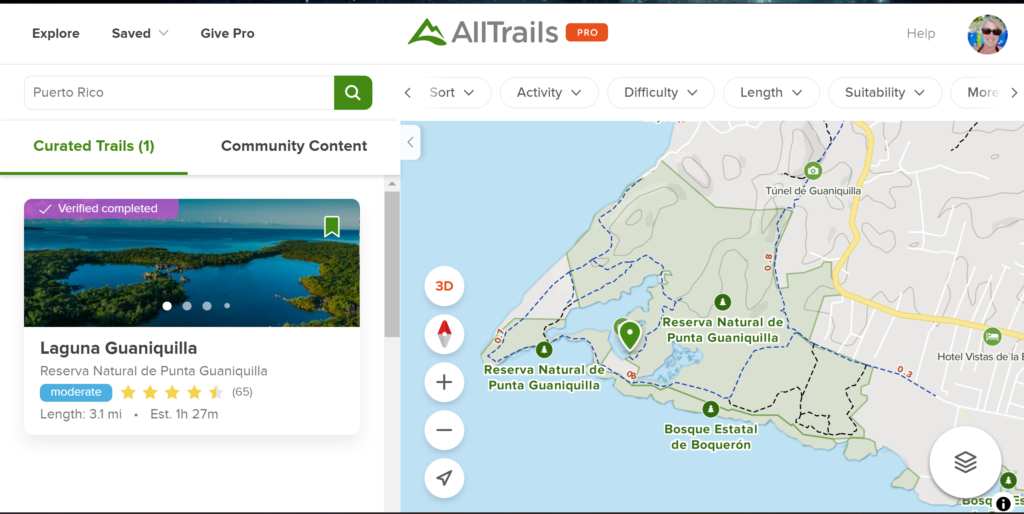
We found adequate parking at the trailhead after following Google Maps on Lisa’s phone to get to it. The sign at the entrance was not promising, as it didn’t show hide or hair of a tunnel. But we forged ahead, following Alltrails and our instincts.
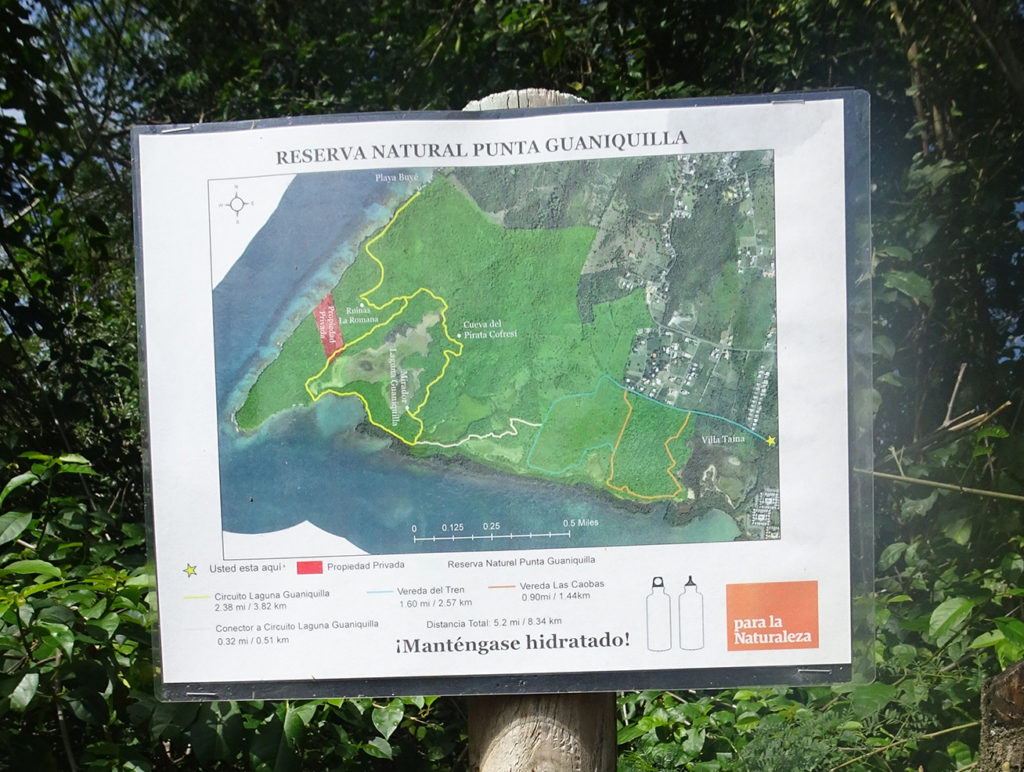
The actual tunnel is .6 miles from the trailhead, but we extended the hike by taking the trails toward the water, then came back around and trekked toward the tunnel.
We saw some really interesting plants on the way.
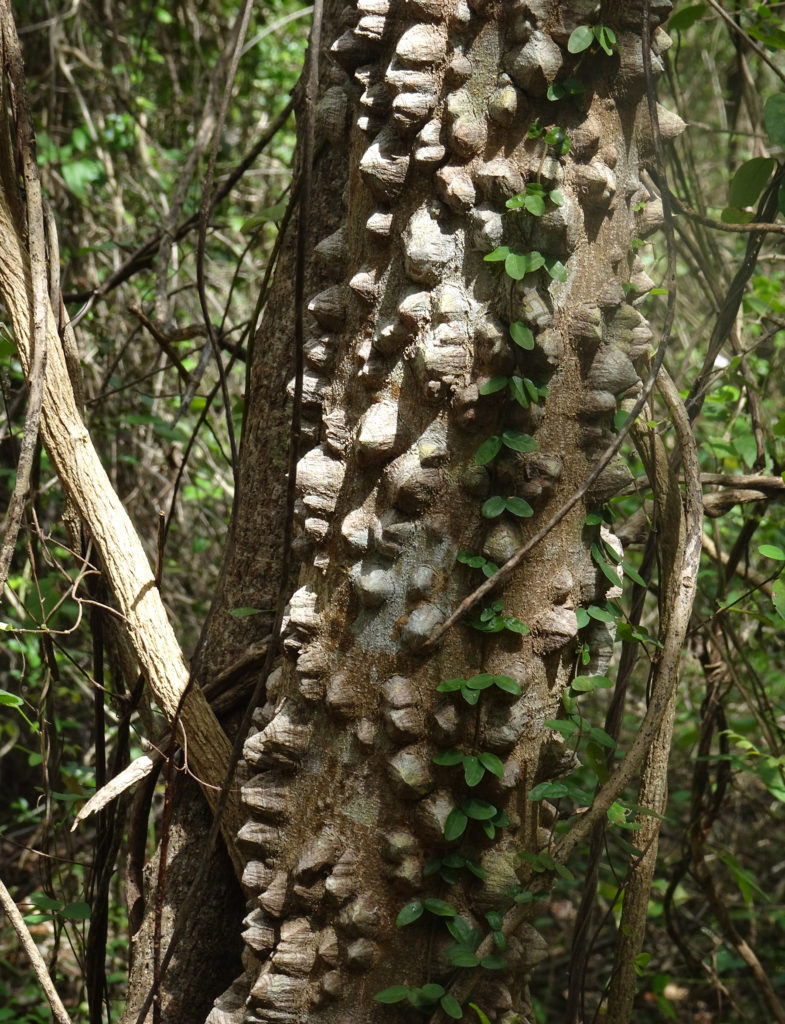
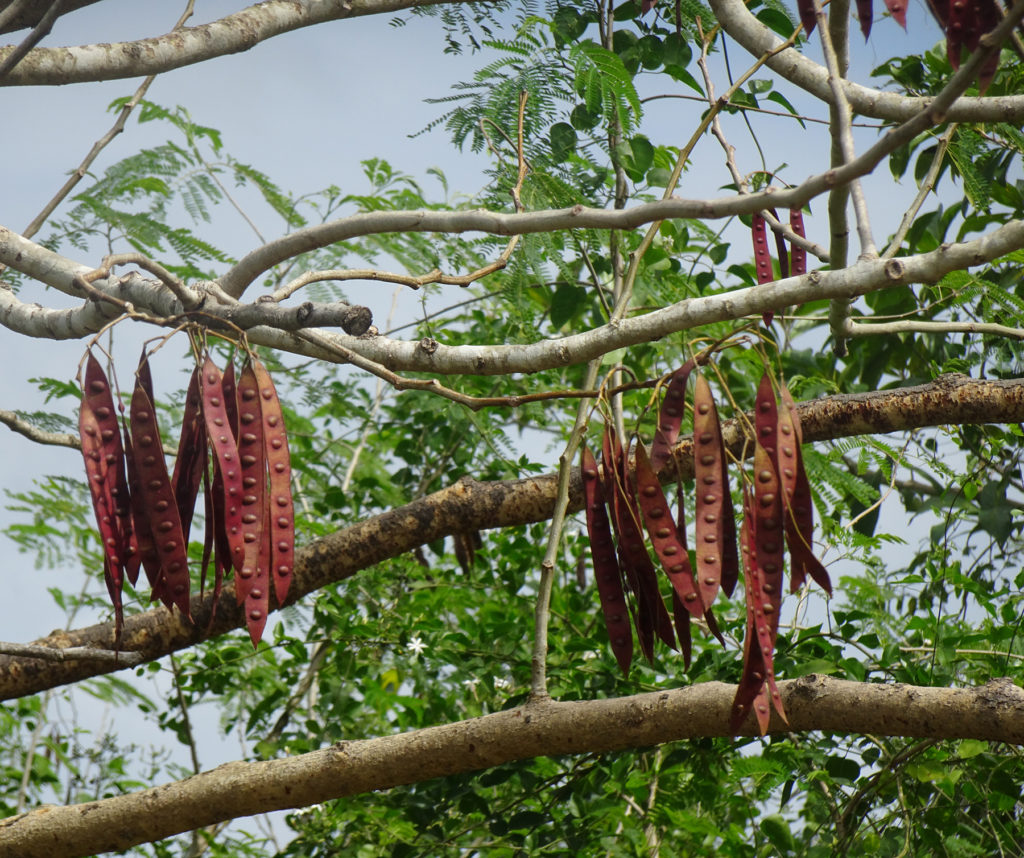
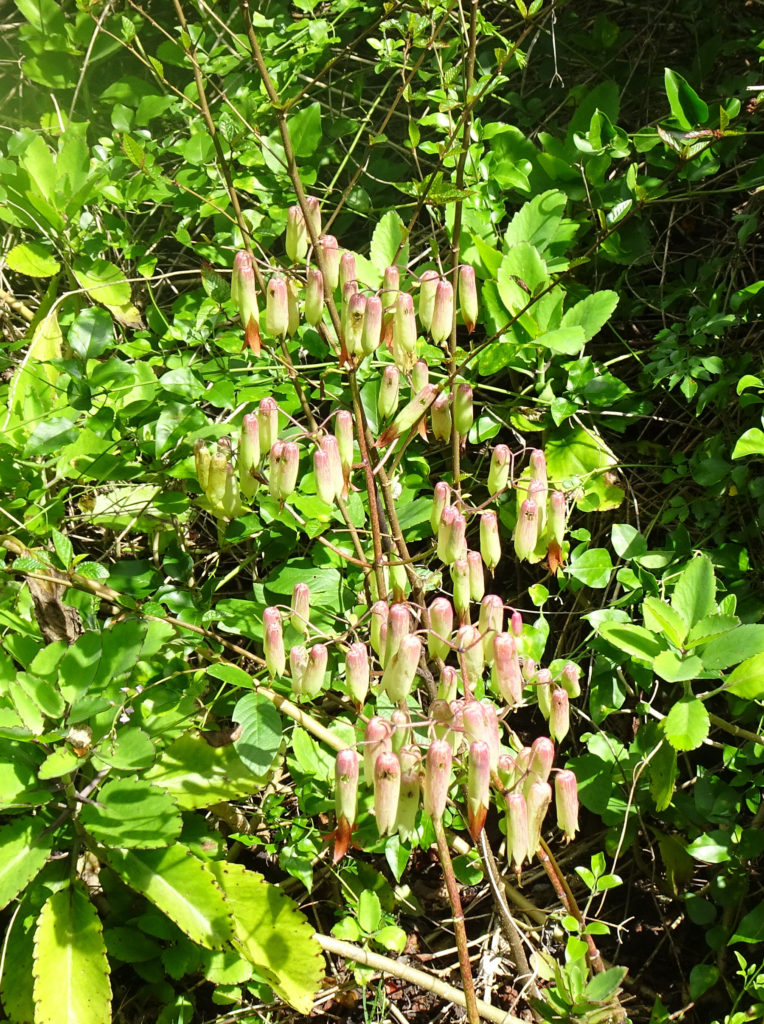
Then we saw the first homemade sign that said we were on the right path:
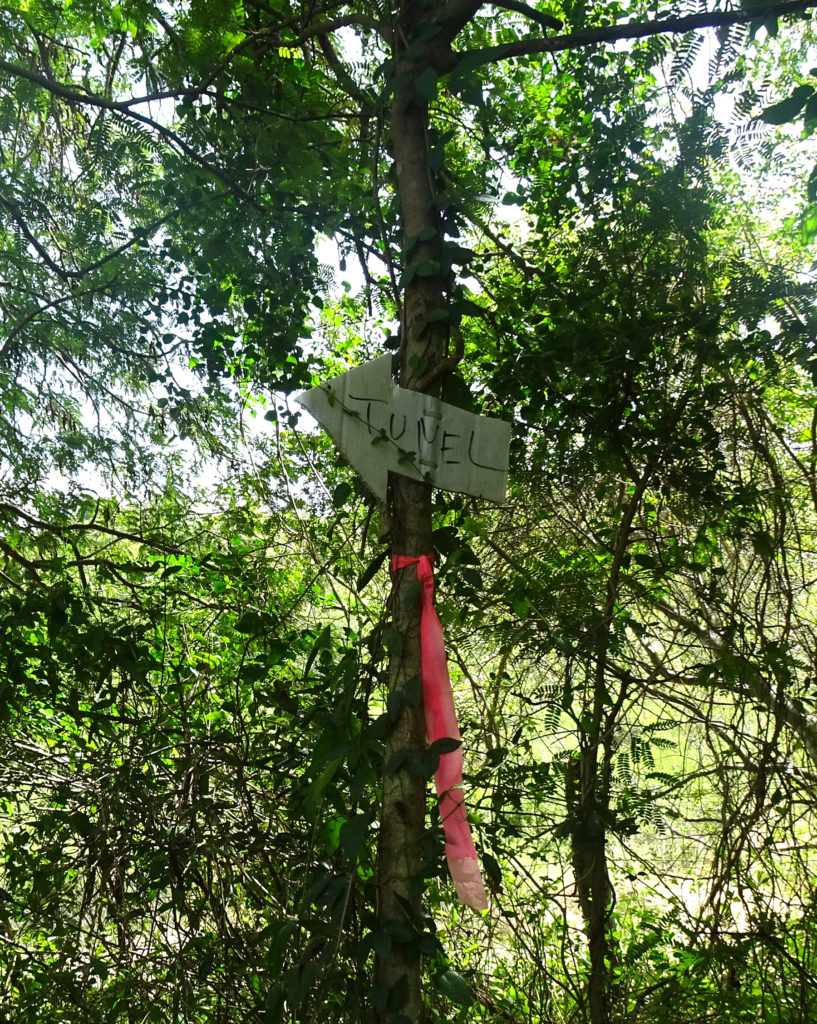
The Guaniquilla Tunnel is carved out of a rocky hillside, with dramatic cliffs on both sides of the trail leading to it. It was used for trains to transport sugar cane.
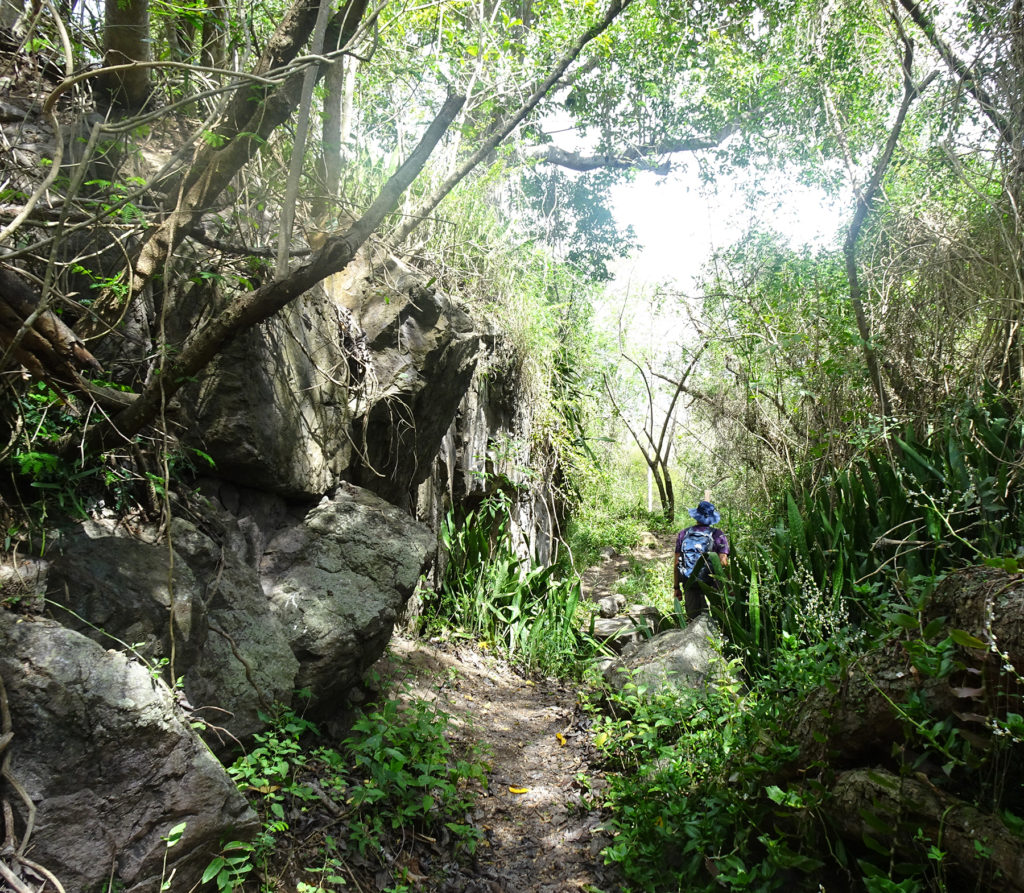

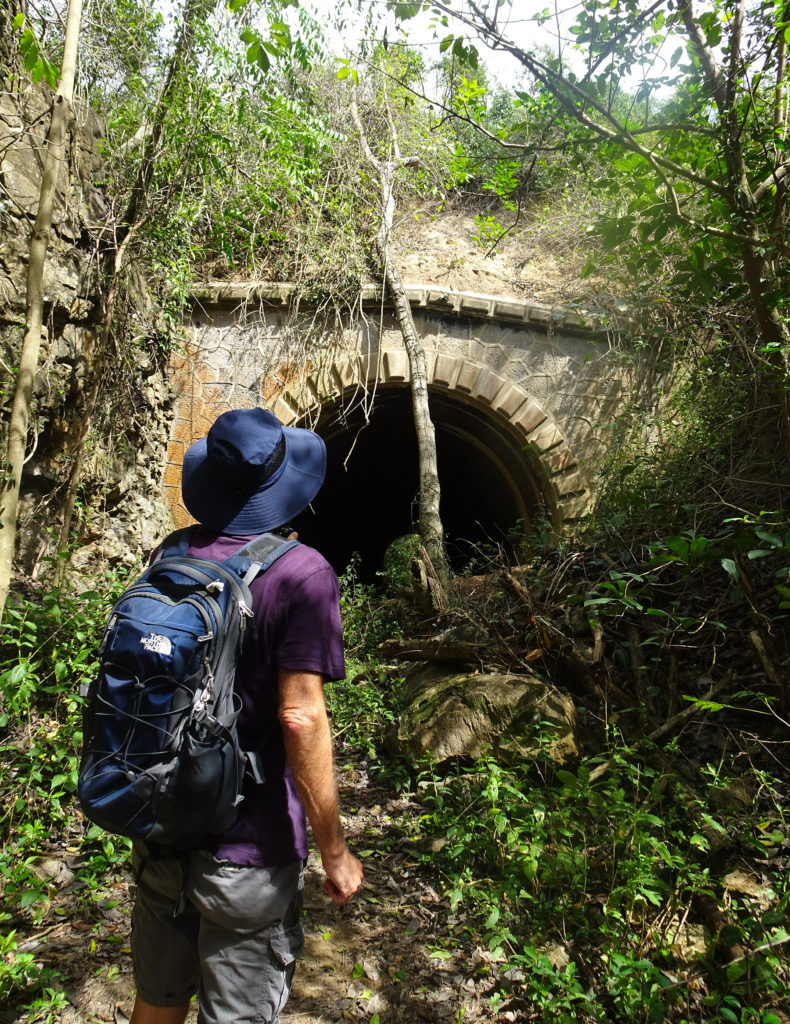
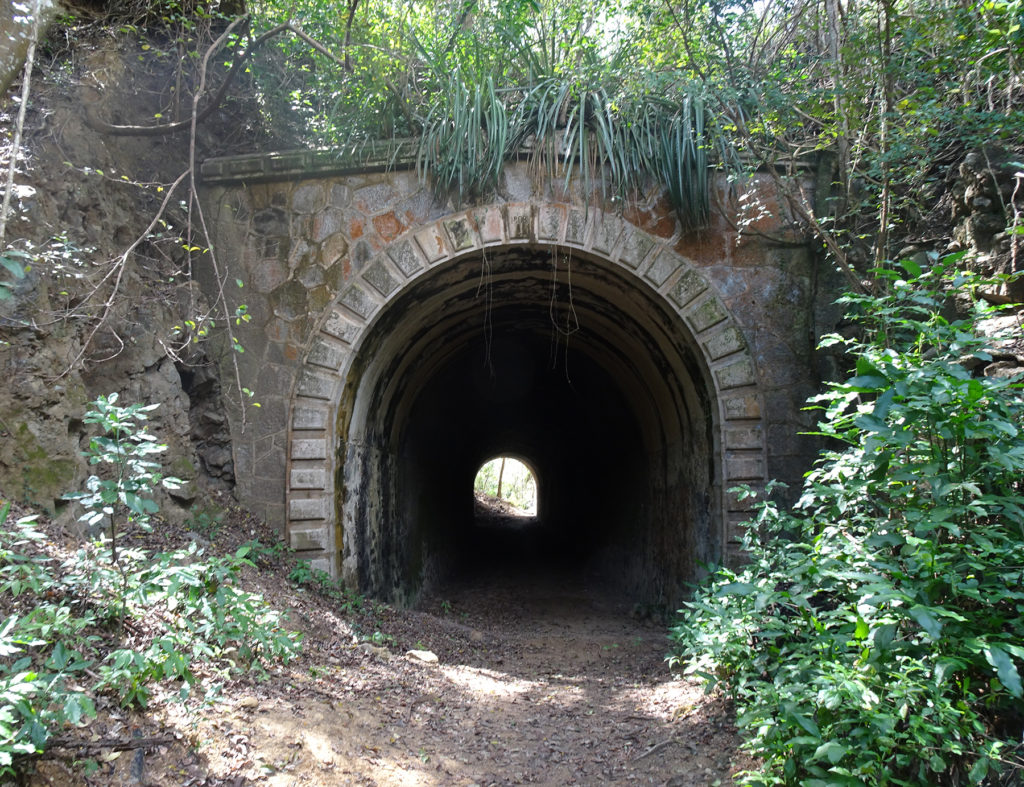
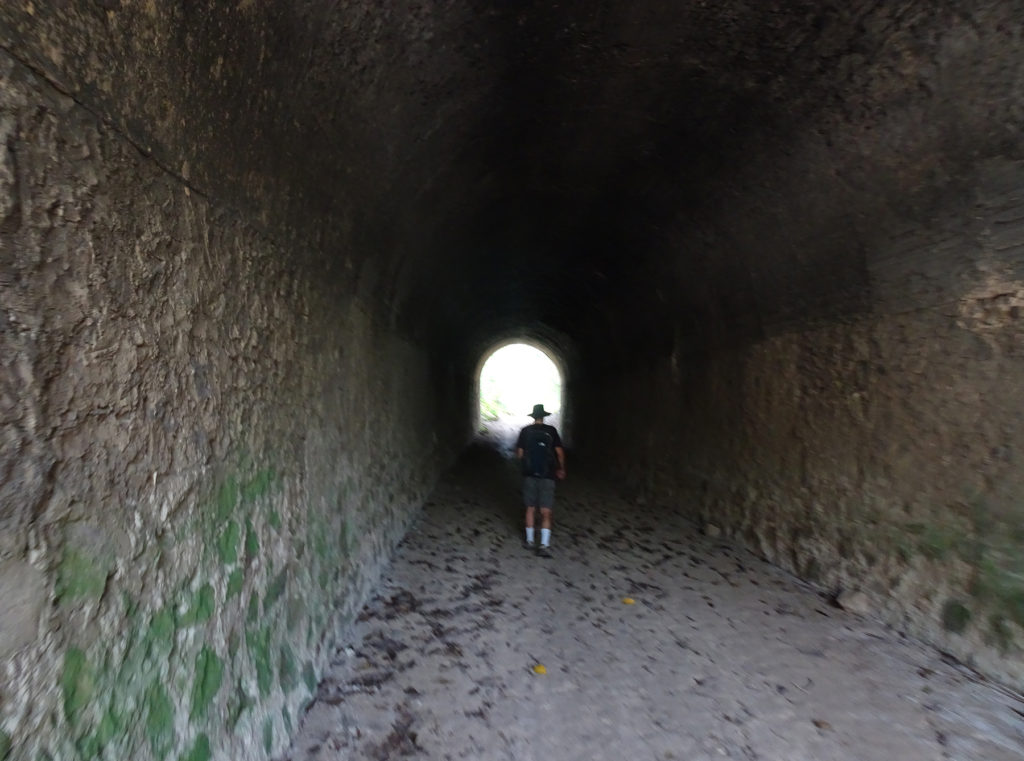
According to Expedia, this was one of the first tunnels built for Puerto Rico’s old rail network that previously crossed the island. For the first 50 years of the 20th century, trains were a popular method of travel here, but they fell into disuse and left behind landmarks such as this hidden hillside tunnel.
Anyone who thinks it’s not worth the hike has no appreciation of nature’s splendor or what man has wrought to tame it. Go!


